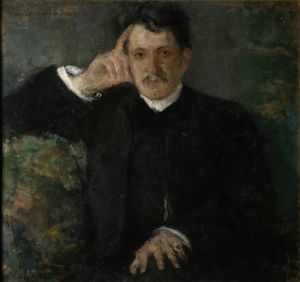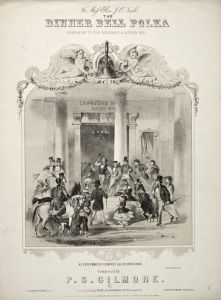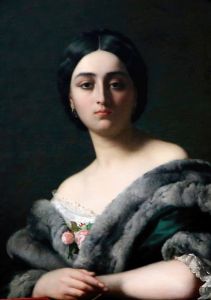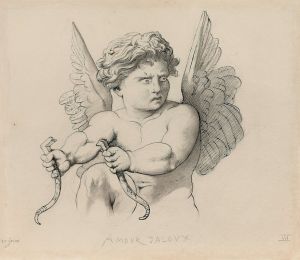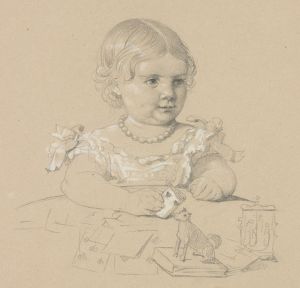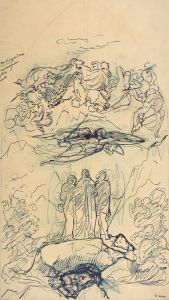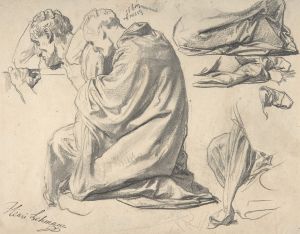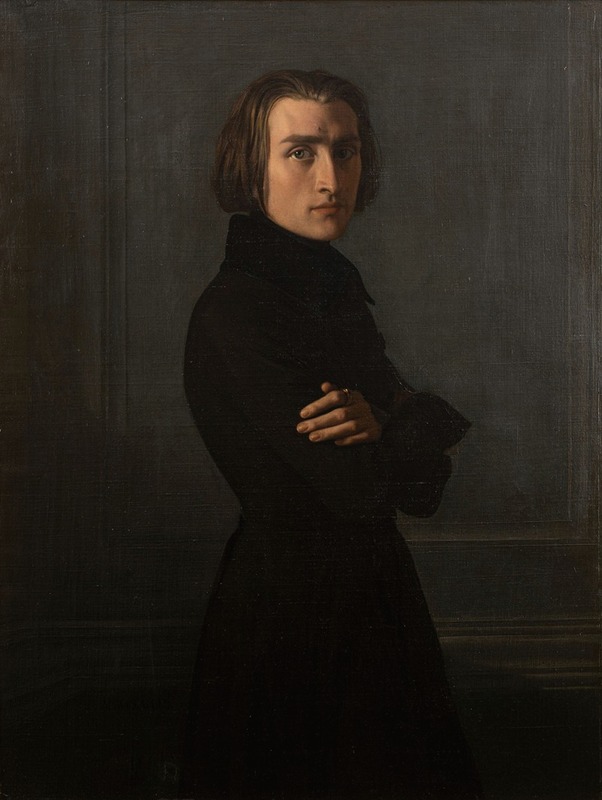
Portrait de Franz Liszt , compositeur et pianiste
A hand-painted replica of Henri Lehmann’s masterpiece Portrait de Franz Liszt , compositeur et pianiste, meticulously crafted by professional artists to capture the true essence of the original. Each piece is created with museum-quality canvas and rare mineral pigments, carefully painted by experienced artists with delicate brushstrokes and rich, layered colors to perfectly recreate the texture of the original artwork. Unlike machine-printed reproductions, this hand-painted version brings the painting to life, infused with the artist’s emotions and skill in every stroke. Whether for personal collection or home decoration, it instantly elevates the artistic atmosphere of any space.
Henri Lehmann's "Portrait of Franz Liszt, Composer and Pianist" is a notable 19th-century painting that captures the essence of one of the most influential figures in the history of Western music. Franz Liszt, born in 1811 in the Kingdom of Hungary, was a virtuoso pianist, composer, and conductor, renowned for his exceptional skill and innovative contributions to the Romantic era of classical music. Lehmann's portrait is a testament to Liszt's prominence and the admiration he inspired among his contemporaries.
Henri Lehmann, a German-born French painter, was known for his portraits and historical scenes. He was a student of the celebrated painter Jean-Auguste-Dominique Ingres, whose influence is evident in Lehmann's precise and refined style. Lehmann's ability to capture the character and presence of his subjects made him a sought-after portraitist in 19th-century France.
The portrait of Franz Liszt by Lehmann is believed to have been completed in the mid-1830s, a period when Liszt was gaining widespread acclaim across Europe for his extraordinary performances and charismatic presence. This painting is one of several portraits of Liszt from this era, reflecting the pianist's growing fame and the fascination he held for artists and audiences alike.
In the portrait, Liszt is depicted with a contemplative expression, his gaze directed slightly away from the viewer, suggesting introspection and depth. His long hair, a distinctive feature of his appearance, frames his face, adding to the romantic aura that surrounded him. The attire Liszt wears in the portrait is typical of the period, reflecting his status as a fashionable and sophisticated artist.
Lehmann's use of light and shadow in the painting highlights Liszt's facial features, emphasizing his high cheekbones and intense eyes. The background is kept simple, ensuring that the focus remains on Liszt himself. This compositional choice underscores the importance of the subject and allows viewers to engage directly with Liszt's persona.
Franz Liszt's impact on music was profound. He was a pioneer of the solo piano recital, transforming the way pianists performed and engaged with audiences. His compositions, which include symphonic poems, piano concertos, and numerous solo piano works, expanded the technical and expressive possibilities of the piano. Liszt's influence extended beyond his compositions; he was also a generous supporter of other musicians and a teacher who shaped the next generation of pianists.
Lehmann's portrait of Liszt is more than a mere likeness; it is a reflection of the cultural and artistic milieu of the time. It captures the spirit of an era when music and art were undergoing significant transformations, and figures like Liszt were at the forefront of these changes. The painting remains an important historical document, offering insight into the life and legacy of one of music's most celebrated figures.
Today, the portrait is appreciated not only for its artistic merit but also for its historical significance. It serves as a reminder of Franz Liszt's enduring legacy and the impact he had on the world of music and beyond. Through Lehmann's skillful depiction, viewers are offered a glimpse into the life of a man whose passion and talent continue to inspire musicians and music lovers around the world.






